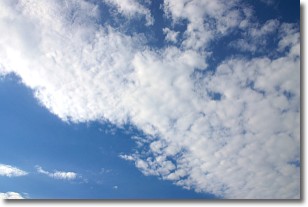Weather Alert in Vermont
Air Quality Alert issued August 2 at 4:48PM EDT by NWS Burlington VT
AREAS AFFECTED: Grand Isle; Western Franklin; Orleans; Essex; Western Chittenden; Lamoille; Caledonia; Washington; Eastern Franklin; Eastern Chittenden
DESCRIPTION: The Vermont Agency of Natural Resources has issued an Air Quality Health Advisory for Code Red or Unhealthy for Everyone or greater category due to Fine Particulates for Caledonia, Eastern Chittenden, Eastern Franklin, Essex, Grand Isle, Lamoille, Orleans, Washington, Western Chittenden, and Western Franklin from midnight tonight to midnight EDT Sunday night. The air quality index, or AQI, is expected to approach or exceed the Code Red or Unhealthy for Everyone or greater category due to Fine Particulates. When pollution levels are in the Unhealthy for Everyone or greater category, the Vermont Department of Health recommends that these individuals consider limiting strenuous outdoor physical activity to reduce the risk of adverse health effects. People who may be especially sensitive to the effects of elevated levels of pollutants include the very young, older adults, and those with preexisting respiratory problems such as asthma or heart disease and those working outside. Those with symptoms should consider consulting their personal physician. People with asthma should follow their asthma action plans and keep quick relief medicine handy. If you have heart disease: symptoms such as palpitations, shortness of breath, or unusual fatigue may indicate a serious problem. If you have any of these, contact your healthcare provider. An Air Quality Action Day means that particulate concentrations within the region may approach or exceed unhealthy standards. For additional information, please visit the Vermont Agency of Natural Resources web site at https://dec.vermont.gov/air-quality/local-air-quality-forecasts.
INSTRUCTION: N/A
Want more detail? Get the Complete 7 Day and Night Detailed Forecast!
Current U.S. National Radar--Current
The Current National Weather Radar is shown below with a UTC Time (subtract 5 hours from UTC to get Eastern Time).

National Weather Forecast--Current
The Current National Weather Forecast and National Weather Map are shown below.

National Weather Forecast for Tomorrow
Tomorrow National Weather Forecast and Tomorrow National Weather Map are show below.

North America Water Vapor (Moisture)
This map shows recent moisture content over North America. Bright and colored areas show high moisture (ie, clouds); brown indicates very little moisture present; black indicates no moisture.

Weather Topic: What are Stratus Clouds?
Home - Education - Cloud Types - Stratus Clouds
 Next Topic: Wall Clouds
Next Topic: Wall Clouds
Stratus clouds are similar to altostratus clouds, but form at a
lower altitude and are identified by their fog-like appearance, lacking the
distinguishing features of most clouds.
Stratus clouds are wider than most clouds, and their base has a smooth, uniform
look which is lighter in color than a nimbostratus cloud.
The presence of a stratus cloud indicates the possibility of minor precipitation,
such as drizzle, but heavier precipitation does not typically arrive in the form
of a stratus cloud.
Next Topic: Wall Clouds
Weather Topic: What are Altocumulus Clouds?
Home - Education - Cloud Types - Altocumulus Clouds
 Next Topic: Altostratus Clouds
Next Topic: Altostratus Clouds
Similar to cirrocumulus clouds, altocumulus clouds are
characterized by cloud patches. They are distinguished by larger cloudlets
than cirrocumulus clouds but are still smaller than stratocumulus clouds.
Altocumulus clouds most commonly form in middle altitudes (between 2 and 5 km)
and may resemble, at times, the shape of a flying saucer.
These uncommon formations, called altocumulus lenticularis, are created by uplift
in the atmosphere and are most often seen in close proximity to mountains.
Next Topic: Altostratus Clouds
Current conditions powered by WeatherAPI.com




